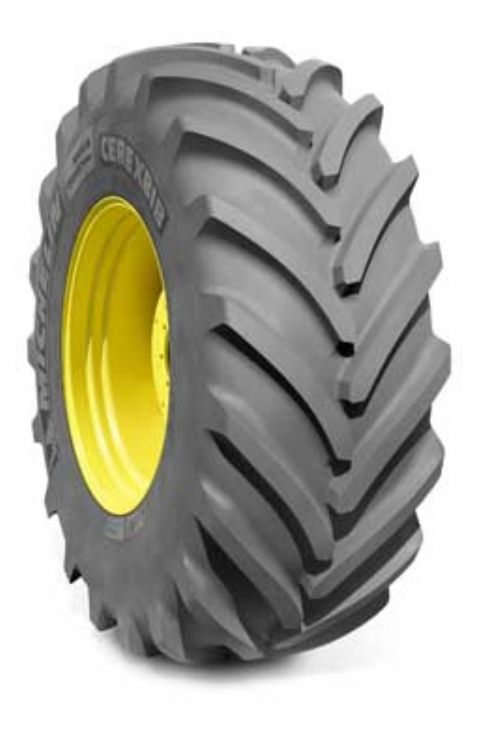
Michelin is using LAMMA as the platform to exhibit a new size of its innovative CerexBib combine harvester tyre for the first time. CerexBib tyres use patented Ultraflex technology and this particular size is specially designed for use on some of the largest machines expected to be delivered to customers this year.
Michelin is launching the new tyre dimension, the IF (Improved Flexion) 800/70 R 38 CFO (Cycling Field Operation), as a direct reaction to the trend of equipment managers producing increasingly heavier machines.
The CerexBib range has been designed with new architecture, materials and an innovative tread design to protect fields and deliver higher load capacity for a narrower width. This performance balance directly benefits large grain farmers, contractors and farm machinery cooperatives
The IF 800/70 R 38 CFO has a diameter of 2.05 metres, therefore offering high ground clearance for harvesting in difficult soil conditions as well as a larger footprint for delivering enhanced traction and front grip when on sloping ground.
Mike Lawton, Commercial Director of Michelin’s Agricultural and Construction division in the UK and Republic of Ireland, says: ’Farmers and contractors are always looking at ways to improve their harvest productivity and as a result we are seeing more powerful and heavier machinery coming onto the market. The issue with this is that this increased weight plays a major factor in soil compaction, load capacity and of course, traffic regulations.
’After launching the CerexBib back in 2010, we helped to alleviate many of these problems. However, what makes the IF 800/70 R 38 CFO CerexBib tyre stand-out in particular is its ability to handle a significantly greater load capacity than a conventional 900/60 R 38 tyre.
’In effect, it allows a manufacturer to build a harvester to its own weight specifications without exceeding a width of 3.5 metres ’ the maximum width that a combine harvester can be without requiring an escort under EU law.’
Lawton says that the CerexBib tyre also significantly reduces the level of soil compaction caused by increasingly heavy machinery as they are designed to work at a pressure of less than two bar.
The tyre also has a higher rate of deflection than conventional technology tyres, ensuring a footprint that is up to 20 per cent larger when compared to an equivalent tyre - reducing soil compaction further.
